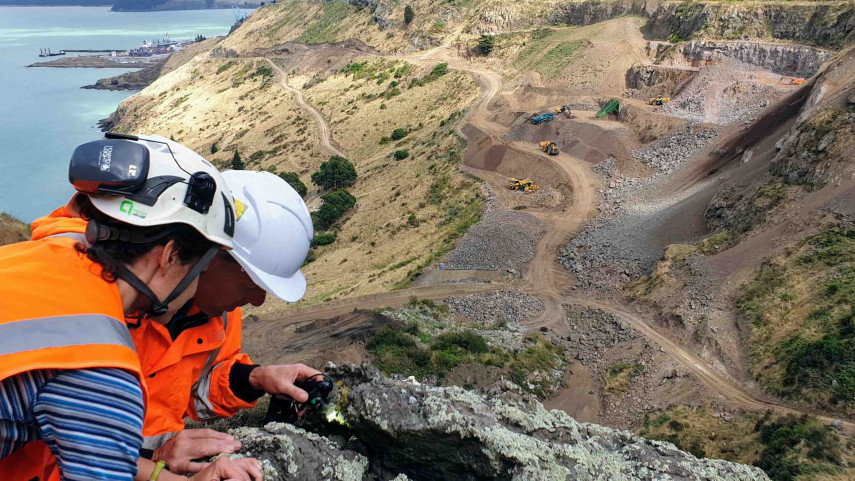
More geckos move into Riccarton Bush

Share this story
More native geckos have been given a new home in Riccarton Bush.
Last month Dr Graham Ussher and his team from RMA Ecology safely captured Waitaha geckos from the Gollans Bay quarry, beside Lyttelton Port, and released them in Riccarton Bush.

Dr Graham Ussher from RMA Ecology and LPC’s Environmental Advisor Crystal Lenky search for geckos in the Gollan’s Bay Quarry so they can be relocated to Riccarton Bush.
The eastern part of the Gollans Bay quarry has not been quarried before and is being used as part of the Lyttelton Port Company’s Te Awaparahi Bay Reclamation project, creating an expanded container terminal to keep up with shipping demands.
Some of the area is habitat for New Zealand native Waitaha gecko, and LPC recently gained a wildlife permit from the Department of Conservation which sets out how the company must manage the effects on geckos.
Dr Ussher says the Waitaha are a small, nocturnal native gecko special to the central and southern South Island.
The Department of Conservation regards the Waitaha geckos as a species that has reduced in numbers and distribution since the arrival of people and pest animals. They can live to be over 50 years old.
“That is why LPC is doing its best to capture and relocate the geckos to a safe place before the quarry is developed,’’ says Dr Ussher.
Dr Ussher and LPC workers placed artificial habitats at key locations around the quarry to safely capture the geckos.
The team aimed to catch all the geckos within the salvage area so they could then be released into the tall native forest at Riccarton Bush. It is estimated more than 80 gecko were captured and released.
“Although Riccarton Bush is different to the habitat from which they will be captured, we expect they will do just fine – they are hard wired to use a range of habitats,’’ Dr Ussher says.
“We are confident they will enjoy their new lodgings.’’
Riccarton Bush was chosen because it has 7.8 hectares of established forest surrounded by a state-of-the-art pest and mammal-proof fence that keeps out predators such as rats and cats.
Before the arrival of humans, geckos would have been abundant and lived in a range of habitats from the sea shore to the forest canopy.
Department of Conservation’s Community Ranger Rachel Brown says a similar release of geckos was done in 2012 as part of the Sumner Road recovery project.
“Those geckos have been regularly seen by visitors and the Riccarton Bush Trust Ranger, so it is fantastic to see more of these native creatures safely relocated.”
